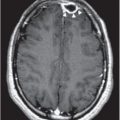| Drugs | Dosage | Side effects | Drug interactions | Comments |
|---|---|---|---|---|
| Amphotericin B | 0.7–1.0 mg/kg/d 3–6 mg/kg/d (liposomal) 5 mg/kg/d (lipid complex) | Immediate hypersensitivity reaction, fever, hypotension, nausea and vomiting during administration, hypokalemia, and nephrotoxicity | Nephrotoxic drugs (e.g., aminoglycosides, pentamidine, foscarnet, cidofovir) | Liposomal or lipid complex formulation should be considered in patients with renal dysfunction |
| Flucytosine (5-FC) | 25 mg/kg q6h | Gastrointestinal, bone marrow suppression | Nephrotoxic drugs | Dosage must be reduced in patients with renal dysfunction; drug level should be monitored |
| Fluconazole | 400 mg/d (acute therapy), 200 mg/d (suppressive therapy) | Nausea, rash, and hepatitis | Rifabutin (increased rifabutin levels); rifampin (decreased fluconazole levels) | Dosage may need to be adjusted in renal dysfunction |
| Itraconazole | 200–400 mg BID | Nausea, abdominal pain, rash, headache, edema, and hypokalemia | Rifamycins, ritonavir, phenobarbitol, phenytoin all decrease itraconazole levels The effect of nevirapine is unknown; the drug should not be used concomitantly with terfenadine or astemizole Antacids, histamine blockers decrease itraconazole absorption Itraconazole itself acts as a moderate inhibitor of cytochrome P450 system and can increase levels of indinavir, cyclosporin, digoxin, and phenytoin | Absorption of itraconazole is dependent on food and gastric acid and may be erratic; the newer solution is better absorbed |
Cryptococcal infection in normal hosts
Untreated cryptococcal meningitis is uniformly fatal, so all patients with meningitis must be treated. Most of the available evidence suggests that amphotericin B-based therapy remains the gold standard and the combination of an amphotericin B preparation plus flucytosine (5-FC) should be regarded as the best initial treatment. Recent studies indicate that this combination is most likely to lead to more effective and more rapid clearance of the fungus from the CSF, which is probably the best surrogate marker for ultimate successful therapy. This conceptual approach is consistent with clinical trial data in AIDS that amphotericin B-based therapy is superior to initial therapy with azoles. The different amphotericin B preparations have not been shown to have important differences in response rates of cryptococcal meningitis, although clearly the lipid-based formulations are less toxic than amphotericin B deoxycholate. Because some degree of nephrotoxicity is inevitable if amphotericin B deoxycholate is given for 4 to 6 weeks, current recommendations suggest that liposomal amphotericin at a dose of 5 mg/kg is the preferred treatment for cryptococcal meningitis in normal hosts. Although it is unclear whether 5-FC is necessary in normal hosts, extrapolation from trials in patients with AIDS would suggest that it accelerates clearance of the fungus and improves mortality. The recommended dosage is 37.5 mg/kg four times daily. Levels must be measured to minimize toxicity (especially bone marrow suppression), and dosages must be adjusted for renal insufficiency.
The duration of therapy is not well defined for patients with cryptococcal infection. Normal subjects with no evident risk factors for a poor outcome respond well to 4 weeks of combination therapy, and this is often curative. Prolonged therapy should be considered for patients at risk of relapse (Table 176.2). Pulmonary cryptococcosis without meningeal involvement can be treated initially with fluconazole. However, for meningitis, there is no controlled trial of fluconazole, especially comparing initial azole therapy with an amphotericin B-based regimen. With current data, amphotericin B plus 5-FC is still recommended as standard therapy for cryptococcal meningitis. Fluconazole can be used to treat patients (or to complete a course of treatment in patients) who cannot tolerate amphotericin B or patients without neurological involvement. In many circumstances (need for intravenous access, difficulties with outpatient parenteral therapy, toxicity) a full course of parenteral amphotericin B is impractical or undesirable, and a switch to fluconazole is preferred. Timing of such a switch is uncertain. There is insufficient evidence to advocate using changes in cryptococcal antigen as a guide to making treatment decisions, but it is probably reasonable to consider using the clearance of yeast from CSF as an indicator for switching treatment from polyene to oral azole therapy. In most patients, this is likely to take 2 to 3 weeks to achieve, suggesting this is probably the minimum amount of amphotericin B therapy that should be used.
| Immunosuppression |
| Presentation with neurologic abnormalities |
| CSF leukocyte count ≤20 cells/mm3 |
| CSF antigen titer >1:32 |
| Positive India ink stain after 4 wk of treatment |
| CSF antigen titer greater than 1:8 after 4 wk of treatment |
Abbreviation: CSF = cerebrospinal fluid.
Once patients have been switched to fluconazole, the next question becomes how long to treat? Unfortunately, there are absolutely no well-controlled studies to answer this question. Given the potential severity of cryptococcal infection, the most prudent recommendation would be to treat with fluconazole for 6 to 12 months after clearance of CSF has been documented.
Cryptococcal infection in AIDS
In patients with AIDS, the acute mortality with cryptococcal meningitis ranges from 10% to 25%. Multiple clinical factors have been identified in studies as predictors of a poor outcome, as summarized in Table 176.3
Stay updated, free articles. Join our Telegram channel

Full access? Get Clinical Tree





